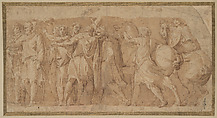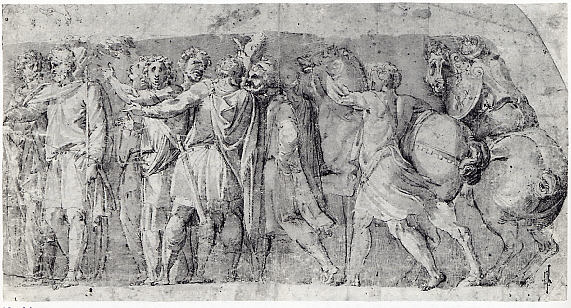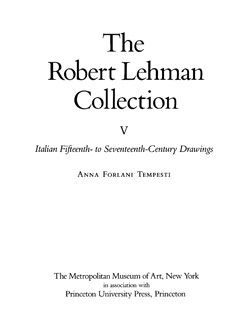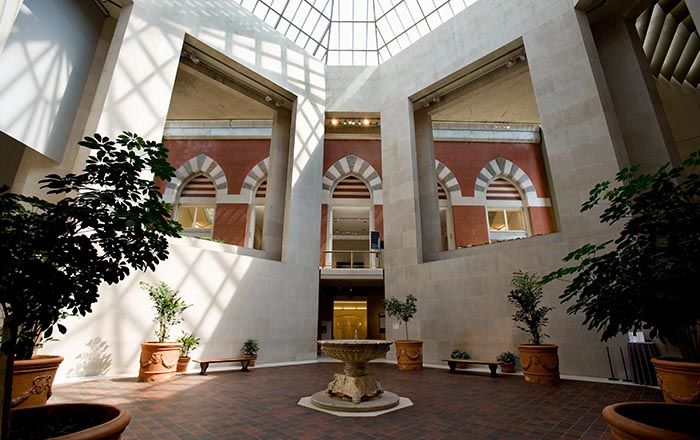Frieze with Male Figures and Two Horses
After Polidoro da Caravaggio Italian
Not on view
The drawing represents part of the story of Tarquinius, the legendary king of Rome in the sixth century BC, and Attus, the augur (an official who foretells events through omens). The composition was copied from the painted facade of a Roman palace (Casa Boniauguri), executed by Polidoro da Caravaggio, a pupil of Raphael’s who was famous for such works. This sheet is part of a group of drawings and engravings (including 1975.1.406) that portray various portions of the lost painting and together help to reconstruct its original appearance. The frieze of military figures and horsemen was inspired by reliefs from classical antiquity, namely Roman monuments portraying triumphal processions.
This image cannot be enlarged, viewed at full screen, or downloaded.
This artwork is meant to be viewed from right to left. Scroll left to view more.




